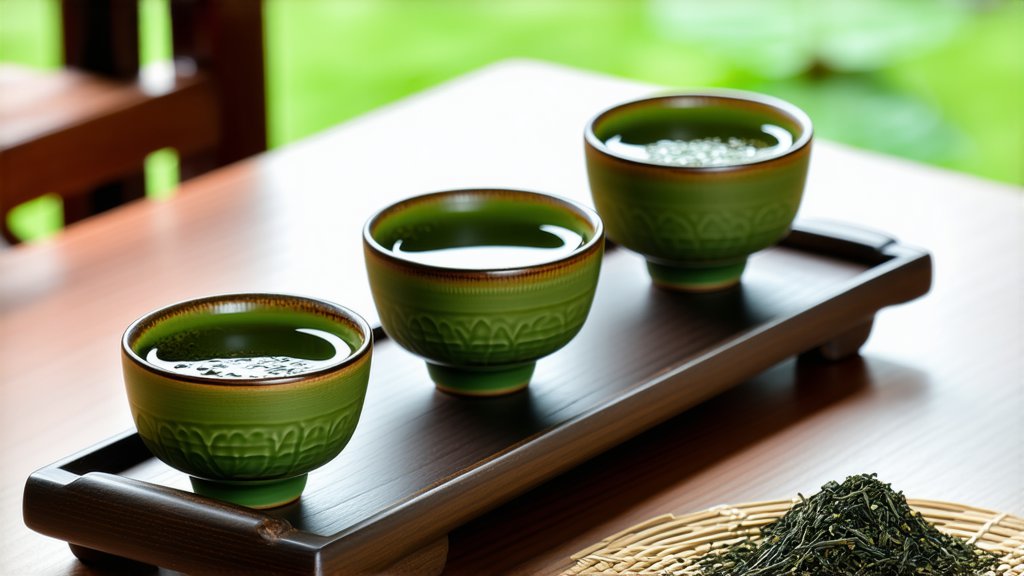
Tieguanyin, often referred to as the "Iron Goddess of Mercy," stands as one of the most revered and distinctive varieties within the expansive universe of Chinese oolong teas. This exquisite tea hails from the lush, misty mountains of Anxi County in Fujian Province, a region that has long been celebrated for its ideal climate and fertile soil, both essential elements for cultivating high-quality tea leaves.
Historical Context
The history of Tieguanyin dates back over 300 years, tracing its roots to the Qing Dynasty. According to local legend, it was discovered by a poor scholar named Wei Yin who found an ancient wild tea tree. He brought cuttings from this tree back to his home and propagated them, eventually creating what we know today as the Tieguanyin variety. Its name, meaning "Iron Buddha," is derived from the original wild tea bush which grew near a temple dedicated to Guanyin, the Buddhist goddess of mercy. Over centuries, Tieguanyin has evolved from a local curiosity to a globally recognized symbol of Chinese tea excellence.
Varieties and Cultivation
Tieguanyin is not just a single type of tea but encompasses a range of sub-varieties, each with its unique flavor profile and aromatic characteristics. The two primary types are Xiang (fragrant) and Dancong (single bush), with the latter being more rare and highly prized. Xiang Tieguanyin is known for its floral and fruity notes, while Dancong varieties can exhibit an incredible diversity of flavors, ranging from creamy and sweet to spicy and herbal.
Cultivation of Tieguanyin is an art form in itself. The tea plants are typically grown on terraced slopes, allowing for optimal sunlight exposure and drainage. Pruning techniques are meticulously applied to encourage the growth of tender shoots and leaves, which are then handpicked with care to ensure only the finest parts of the plant are used for processing.
The Craft of Processing
The production of Tieguanyin involves a series of intricate steps that transform fresh leaves into the fragrant, complex tea we cherish. Here's an overview of the key stages:
-
Sun Withering: Freshly picked leaves are spread out under the sun to reduce moisture content and initiate oxidation. This step softens the leaves, making them pliable for rolling.
-
Cooling: After sun withering, the leaves are moved indoors for cooling to halt further oxidation. This stage helps to lock in the unique flavors and aromas of Tieguanyin.
-
Fixation: The cooled leaves undergo a fixation process, usually through high-temperature roasting or pan-frying, to prevent further oxidation and develop the tea's characteristic color and taste.
-
Rolling: The fixed leaves are then rolled either manually or using specialized machines. Rolling breaks down cell walls, releasing enzymes that contribute to the tea's flavor development.
-
Oxidation: Depending on the desired level of oxidation, the rolled leaves may be left to rest in a controlled environment. For Tieguanyin, this is typically a light oxidation, preserving its greenish hue and fresh aroma.
-
Roasting: The final step involves multiple rounds of roasting over charcoal fires or electric ovens. This not only dries the leaves completely but also imparts a toasty warmth that complements the tea's natural flavors.
The Art of Tasting
Tasting Tieguanyin is an experience that engages all the senses. To truly appreciate this tea, one must pay attention to several aspects:
-
Aroma: Before brewing, dry Tieguanyin leaves emit a subtle fragrance that hints at their complexity. Upon infusion, the aroma becomes more pronounced, revealing floral, fruity, or even mineral notes depending on the variety.
-
Appearance: Observe the unfurling of tightly rolled leaves in hot water, transforming into vibrant green or jade-colored leaves. The clarity and color of the brewed tea, typically a light golden hue, are indicators of quality.
-
Flavor: Sip slowly to savor the multilayered flavors of Tieguanyin. It starts with a smooth, slightly sweet taste followed by a lingering aftertaste that can range from floral and fruity to creamy and nutty.
-
Texture: The mouthfeel of Tieguanyin is silky and velvety, coating the palate without any astringency or bitterness.
-
Aftertaste: A good Tieguanyin leaves a clean, refreshing aftertaste that invites you to take another sip. The lingering sweetness and complexity are hallmarks of a well-crafted tea.
In conclusion, Tieguanyin represents not just a beverage but a profound cultural heritage and an embodiment of the harmony between nature and human craftsmanship. Its journey from a wild tea bush to a globally celebrated oolong tea encapsulates centuries of tradition, innovation, and passion for tea-making. As you embark on your own exploration of Tieguanyin, remember that each cup tells a story—a narrative woven with history, geography, and the artistry of those who have nurtured this extraordinary tea for generations.